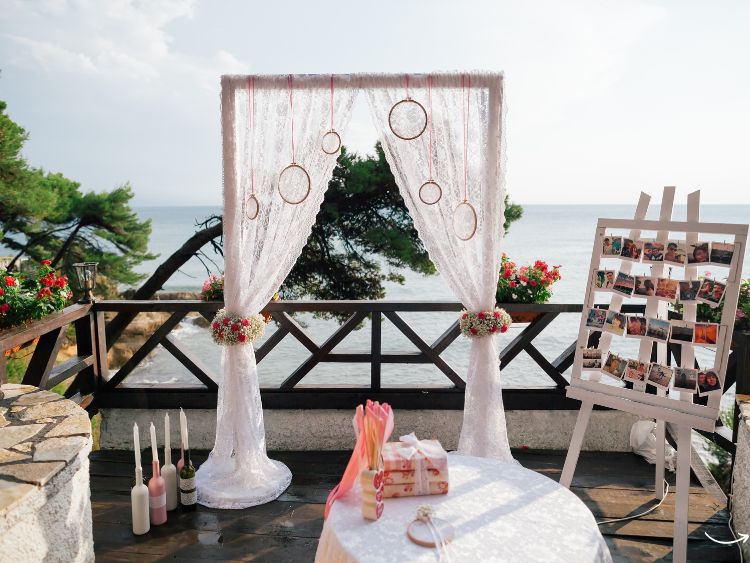Formal vs Black Tie: Understanding the Key Differences
Have you ever received an invitation with the dress code labeled as “Formal” or “Black Tie” and found yourself wondering what exactly that means? You’re not alone. These terms often cause confusion, as they seem similar but have distinct expectations. Whether you’re attending a wedding, a gala, or a corporate event, understanding the difference between “Formal” and “Black Tie” is essential to ensure you’re dressed appropriately.
In this article, we’ll explore the nuances between formal and black tie attire, highlighting key differences, and providing guidelines to help you navigate these dress codes with confidence. By the end, you’ll know exactly what to wear to make the perfect impression at any event. Let’s dive into the world of sartorial elegance and demystify these dress codes.
What is Formal Attire?
Formal attire, often referred to as “semi-formal” or “dressy,” is a broad category that applies to many events, from weddings to upscale dinners. While the specifics can vary depending on the event and location, the general rule is to dress smartly and elegantly.
Key Elements of Formal Attire
- For Men:
- Suits: A well-tailored suit is the cornerstone of formal attire. Dark colors like navy, charcoal, or black are preferred.
- Shirts: A crisp, white dress shirt is a classic choice, though light colors are also acceptable.
- Ties: A tie is typically worn, though some modern formal events may allow for an open collar.
- Shoes: Polished dress shoes, such as oxfords or derbies, are a must.
- For Women:
- Dresses: A cocktail dress or an elegant evening dress is suitable. The dress can be knee-length or longer, depending on the event’s formality.
- Colors: Darker hues are traditional, but lighter shades can be worn in the daytime.
- Accessories: Subtle, sophisticated jewelry and a clutch bag complement the outfit.
- Shoes: Heels are typical, but make sure they’re comfortable enough for a night of socializing.
What is Black Tie Attire?
Black tie attire is a step up from formal, reserved for the most elegant of occasions. Think of it as the epitome of classic style, with strict guidelines that leave little room for interpretation. When the invitation says “Black Tie,” it means you’re expected to bring your A-game.
Key Elements of Black Tie Attire
- For Men:
- Tuxedo: The tuxedo is the defining element of black tie attire. It includes a black or midnight blue jacket with satin or grosgrain lapels, matching trousers with a satin stripe, and a white dress shirt.
- Bow Tie: A black bow tie is non-negotiable. It’s the signature piece of the black tie look.
- Cummerbund or Waistcoat: Traditionally, a cummerbund or waistcoat is worn to cover the waist.
- Shoes: Patent leather dress shoes complete the ensemble, adding a polished touch.
- For Women:
- Gowns: A floor-length evening gown is the standard for black tie events. This is the time to go all out with luxurious fabrics like silk, satin, or velvet.
- Colors: While black is a popular choice, rich jewel tones or metallics also shine in black tie settings.
- Accessories: Statement jewelry, a chic clutch, and perhaps a shawl or wrap if the event is in cooler weather.
- Shoes: High heels, preferably in a style that complements the gown, are the norm.
Formal vs Black Tie: The Key Differences
Now that we’ve outlined what formal and black tie attire entail, let’s break down the key differences between these two dress codes.
Level of Formality
- Formal: Offers more flexibility, allowing for a broader range of attire. Suits for men and cocktail dresses for women are common.
- Black Tie: Requires a strict adherence to traditional evening wear, with tuxedos and floor-length gowns being the norm.
Occasion Types
- Formal: Appropriate for a wide variety of events, from weddings to corporate dinners and upscale parties.
- Black Tie: Typically reserved for the most prestigious events, such as galas, award ceremonies, and formal weddings.
Color Palette
- Formal: Allows for a wider range of colors, though darker shades are still predominant.
- Black Tie: Emphasizes classic, dark colors, particularly black, midnight blue, and deep jewel tones.
Accessories
- Formal: Offers more freedom in accessory choices. Men can opt for ties or no ties, and women can choose a mix of jewelry styles.
- Black Tie: Demands a specific set of accessories, such as bow ties for men and statement jewelry for women.
Navigating Invitations: How to Choose Your Outfit
Receiving an invitation with a specified dress code can be daunting, but with a clear understanding of the differences between formal and black tie, you’ll be able to choose the perfect outfit with ease.
Tips for Men
- Formal Event: If the event is formal, opt for a dark suit, a crisp dress shirt, and a tie. Polished dress shoes and minimal accessories will complete your look.
- Black Tie Event: For black tie, a tuxedo is a must. Ensure all elements are in place: the bow tie, the cummerbund or waistcoat, and patent leather shoes.
Tips for Women
- Formal Event: A cocktail dress or a sophisticated evening dress is ideal. Pair it with elegant accessories and comfortable heels.
- Black Tie Event: Choose a floor-length gown, and don’t shy away from making a statement with your accessories and shoes.
FAQs: Formal vs Black Tie
Q: Can I wear a suit to a black tie event? A: No, a tuxedo is required for a black tie event. A suit, no matter how well-tailored, doesn’t meet the level of formality expected.
Q: Is it acceptable to wear a short dress to a black tie event? A: For women, a floor-length gown is the standard for black tie events. A short dress, even if elegant, typically doesn’t meet the expectations of black tie.
Q: Can I skip the tie for a formal event? A: While some modern formal events may allow for a tieless look, it’s generally safer to wear a tie to ensure you’re appropriately dressed.
Q: Are there any exceptions to the dress code rules? A: Occasionally, the host may specify variations to the dress code on the invitation. Always follow the host’s instructions if they differ from traditional guidelines.
Conclusion
Understanding the difference between formal and black tie attire is crucial for dressing appropriately and confidently for any event. While formal attire offers more flexibility, black tie is all about adhering to time-honored standards of elegance. By following the guidelines outlined in this article, you’ll be well-prepared to make the right impression, no matter the occasion.
Authoritative Links
- www.gentlemansgazette.com/formal-vs-black-tie/
- www.theblacktux.com/blog/black-tie-vs-formal-attire/
- www.brides.com/formal-vs-black-tie-dress-code-5077171
This article provides a comprehensive guide to understanding the differences between formal and black tie attire, ensuring that you’re well-prepared for any event with confidence and style.







